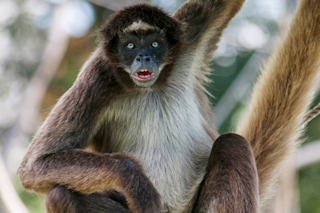This story was originally published in our March/April 2022 issue as "From Combat to Conservation." Click here to subscribe to read more stories like this one.
Deep in the Colombian Amazon rainforest, dozens of sweat-soaked men and women weave through a maze of ceiba and rubber trees. Armed with machetes, they hack through vines as thick as saplings. They move in utter silence, eyes squinting in the dim light. They approach their mission — cataloging and protecting endangered species — with intent focus. A few years ago, these former members of the guerilla group FARC might have been tracking enemy soldiers or preparing to kidnap a political prisoner. Now their targets are far more elusive: giant river otters, nimble brown spider monkeys, Dracula orchids with black petals and fanglike protrusions, the riotously colored Flor de Mayo.
Socratea exhorriza, or the walking palm, is native to tropical rainforests in Central and ...















